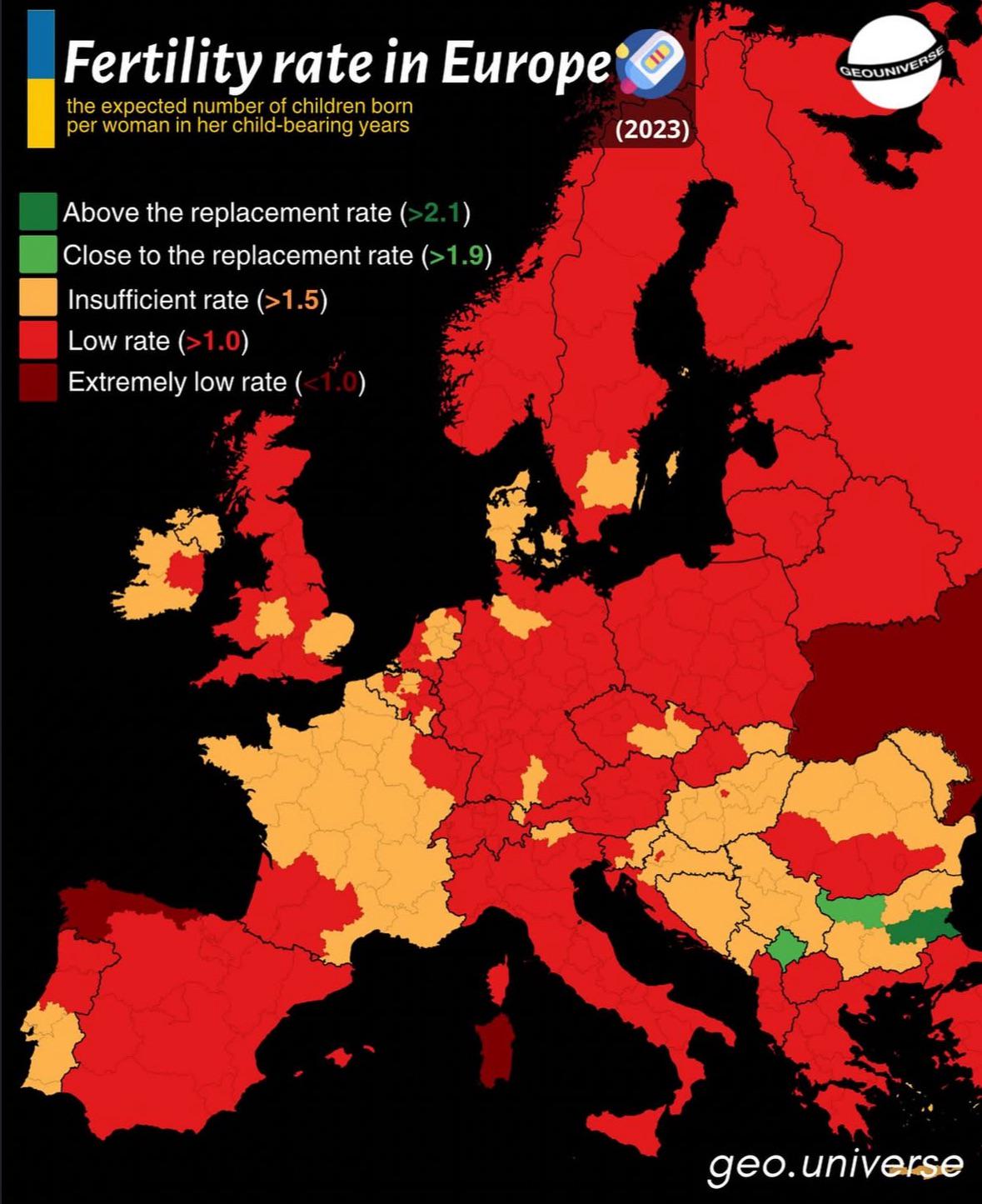Fertility Rate in Europe Map


Alex Cartwright
Senior Cartographer & GIS Specialist
Alex Cartwright is a renowned cartographer and geographic information systems specialist with over 15 years of experience in spatial analysis and data...
Geographic Analysis
What This Map Shows
The "Fertility Rate in Europe Map" provides a visual representation of the average number of children born to a woman over her lifetime across various European countries. Fertility rates are crucial indicators of demographic trends, influencing population growth, economic stability, and social structures. This map highlights the disparities in reproductive behavior and family planning across the continent, shedding light on both the challenges and opportunities that different nations face regarding their populations.
Deep Dive into Fertility Rates
Fertility rates are influenced by a myriad of factors including cultural norms, economic conditions, education, and government policies. In Europe, the total fertility rate (TFR) has seen significant changes over the years. For instance, countries like France and Sweden report higher fertility rates, often exceeding the replacement level of 2.1 children per woman, largely due to progressive family policies that support working parents and childcare.
Interestingly, Southern and Eastern European countries tend to have lower fertility rates. Nations such as Italy and Spain have seen TFRs drop below 1.3, a concerning trend that raises questions about future population sustainability. In Italy, for example, economic uncertainty and a high cost of living have led many young couples to delay starting families, resulting in a demographic shift towards an aging population.
Moreover, education plays a pivotal role in shaping fertility patterns. Women's access to education and career opportunities often correlates with lower fertility rates. Countries like Germany and the Netherlands, where women are encouraged to pursue higher education and professional careers, also report lower fertility rates compared to countries where traditional family structures dominate.
Another factor influencing fertility is immigration. Countries with high levels of immigration, such as Germany, benefit from a younger demographic that tends to have higher fertility rates compared to native populations. This demographic mix can help offset the aging population issue, although it sometimes leads to social and political tensions regarding integration and resource allocation.
Regional Analysis
When examining fertility rates across Europe, distinct regional patterns emerge. Northern European countries, such as Norway, Denmark, and Finland, exhibit some of the highest rates. These nations have invested in family-friendly policies that include generous parental leave, subsidized childcare, and strong support systems for families. For instance, Norway's fertility rate is approximately 1.5, bolstered by policies that encourage both parents to partake in child-rearing.
Conversely, Southern Europe presents a stark contrast. Italy and Spain, with fertility rates around 1.2, reflect societal pressures and economic challenges that deter family growth. In these countries, traditional family values persist, yet the reality of modern life, including job insecurity and high living costs, often discourages couples from having more children.
Eastern Europe also faces its own unique challenges. Nations like Hungary and Poland have implemented pro-natalist policies in an attempt to boost their declining birth rates. However, cultural attitudes towards family size and economic constraints continue to hinder significant improvements. Interestingly, some countries are beginning to see a rise in birth rates due to government incentives, signaling a potential shift in trends if these policies remain effective.
Significance and Impact
Understanding fertility rates is crucial for several reasons. Firstly, they directly impact the sustainability of a country's population. Low fertility rates can lead to an aging population, which poses challenges for social services, healthcare, and economic productivity. Countries like Japan and Italy are already grappling with these issues, and Europe is not far behind.
Moreover, fertility rates have broader implications for economic growth. A younger population typically contributes more to the workforce, fostering innovation and economic dynamism. Conversely, a declining population can result in labor shortages, affecting everything from pension systems to healthcare provision.
Interestingly, as European countries adapt to changing demographics, they are also rethinking immigration policies. Countries with declining fertility rates may increasingly rely on immigration to bolster their workforce and support economic growth. This creates a complex interplay between fertility rates and immigration, potentially reshaping the cultural landscape of Europe.
In conclusion, the Fertility Rate in Europe Map is not just a representation of numbers; it's a reflection of societal values, economic conditions, and future projections. As trends evolve, understanding these patterns will be essential for policymakers, businesses, and communities alike, ensuring that they are prepared for the challenges and opportunities that lie ahead.
Visualization Details
- Published
- August 18, 2025
- Views
- 98
Comments
Loading comments...